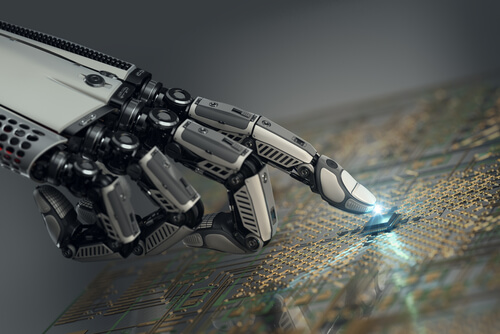Even as artificial intelligence (AI) becomes mainstream, the misinformation surrounding it continues to grow. Lately, two extreme camps have emerged: one believes AI offers the cure-all companies have been waiting for, and the other believes AI will take our jobs and wreak havoc on the economy. At the end of the day, neither of these camps facilitate a productive conversation about the problems AI can help tackle.

Before getting caught up in the various possibilities AI offers, marketers need to be informed about how exactly AI can make an impact and, just as importantly, how it can’t.
3 Big AI Marketing Myths To help you get started, here are the three most common misconceptions about AI in marketing:
- AI Is Always the Answer Marketers feel tremendous pressure to implement the latest AI technology to maintain a competitive edge. According to the IDC, spending on cognitive and AI systems is expected to reach $77.6 billion in 2022 — more than triple the investment in 2018. And a significant portion of this investment is funneled to marketing operations. Forrester estimates that 46% of companies using AI have implemented it for sales and marketing, and 40% use it for customer support. But as the old adage goes, if all your friends jumped off a bridge, would you? Just because implementing AI is the cutting-edge thing to do doesn’t necessarily mean it’s the right move for your business.
Though AI is a worthwhile investment if done right, throwing new technology at an outdated system typically won’t yield the desired effect. The truth is, not every company is equipped to effectively implement the latest technologies. Many enterprises remain bogged down in legacy systems, with siloed operations that aren’t conducive to integrating with new solutions. The appropriate infrastructure has to be in place for AI to be most effective — anything less is a recipe for disaster. You may argue you can simply buy AI. But remember that AI is not a strategy, it’s simply a collection of tools to help you execute your strategy. So before getting AI to find the answer, define the problem and map out your approach.
- All AI Is Created Equal AI is a broad label frequently thrown around to describe any number of diverse applications, functions and capabilities. But though AI is often used as a blanket term, the topplay technology itself isn’t uniform. Not all AI is equally effective; it’s only as good as the data used to train it. AI needs constant nourishment — continuous training and tuning to be effective and relevant.
Though AI as a concept has been around for decades, applications were initially rudimentary, restricted to answering elementary questions or completing basic tasks. It wasn’t until the rise of big data that the field really began to take off, developing more sophisticated, useful capabilities. The most effective AI solutions are trained with large amounts of high-quality data, allowing the technology to learn quickly from rich information sources. Faulty, skewed or limited data will significantly inhibit AI’s ability to learn, and in turn, provide business value.
- AI Is Coming for Our Jobs Perhaps the biggest cloud over AI’s potential is the fear it will steal our jobs. First things first, AI is nowhere near replicating human intelligence. While it has been effectively deployed to manage a number of tasks, general AI is decades, or even centuries, away.
Second, just like any new technology, AI is bound to change the way we work — but it won’t usher in an economic collapse. Just like the revolutionary technological advancements that came before it — from the wheel, to the internet, to the iPhone — AI will disrupt workflows, but it won’t destroy them. In fact, the widespread implementation of AI is predicted to create as many as 58 million new jobs by 2022. And with AI able to manage routine tasks, human employees can dedicate their time to more rewarding, high-impact projects. In marketing, for example, AI can do the heavy lifting of collecting data on consumer behaviors and preferences to inform buyer personas, giving marketers more time to create thought-provoking, timely campaigns to drive results for their brands.
Though AI can do a number of things to support marketing efforts, it can’t do everything. Humans will continue to be essential. Beyond providing creativity, problem-solving and planning, humans will be crucial to the AI itself. A marketer’s social listening tool, for instance, can monitor what customers say about their company, but may get tripped up on an unfamiliar slang word, misspelling or even complex syntax in a Tweet. Human input, both during training and throughout implementation, helps AI navigate the nuances and irregularities of human speech and behavior that data often can’t account for.
The Truth of AI Lies Somewhere in the Middle With AI poised to transform the way we live and work, the secret to navigating the AI landscape is understanding its limits. AI is not going to solve all of our problems, nor will it overrun the human workforce. Somewhere between a cure-all and a death knell for business lives tremendous opportunity for savvy marketers to cut through the misinformation and determine what AI can and cannot do for their business.